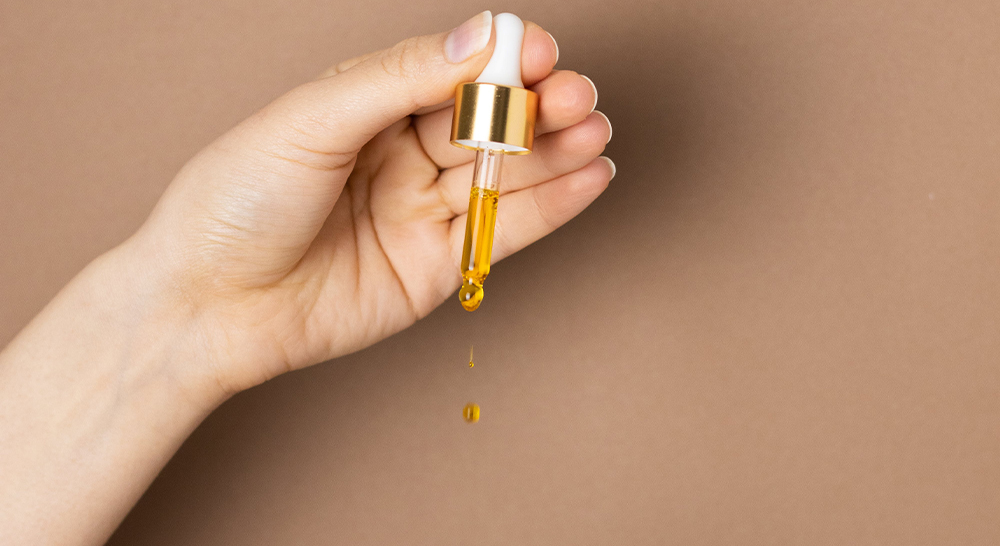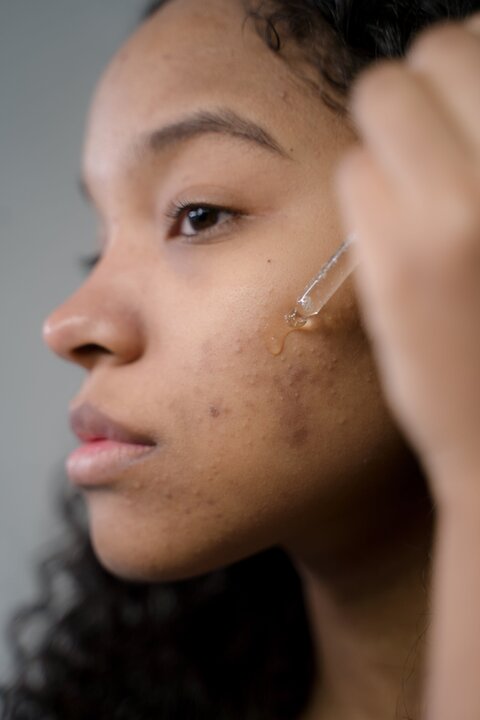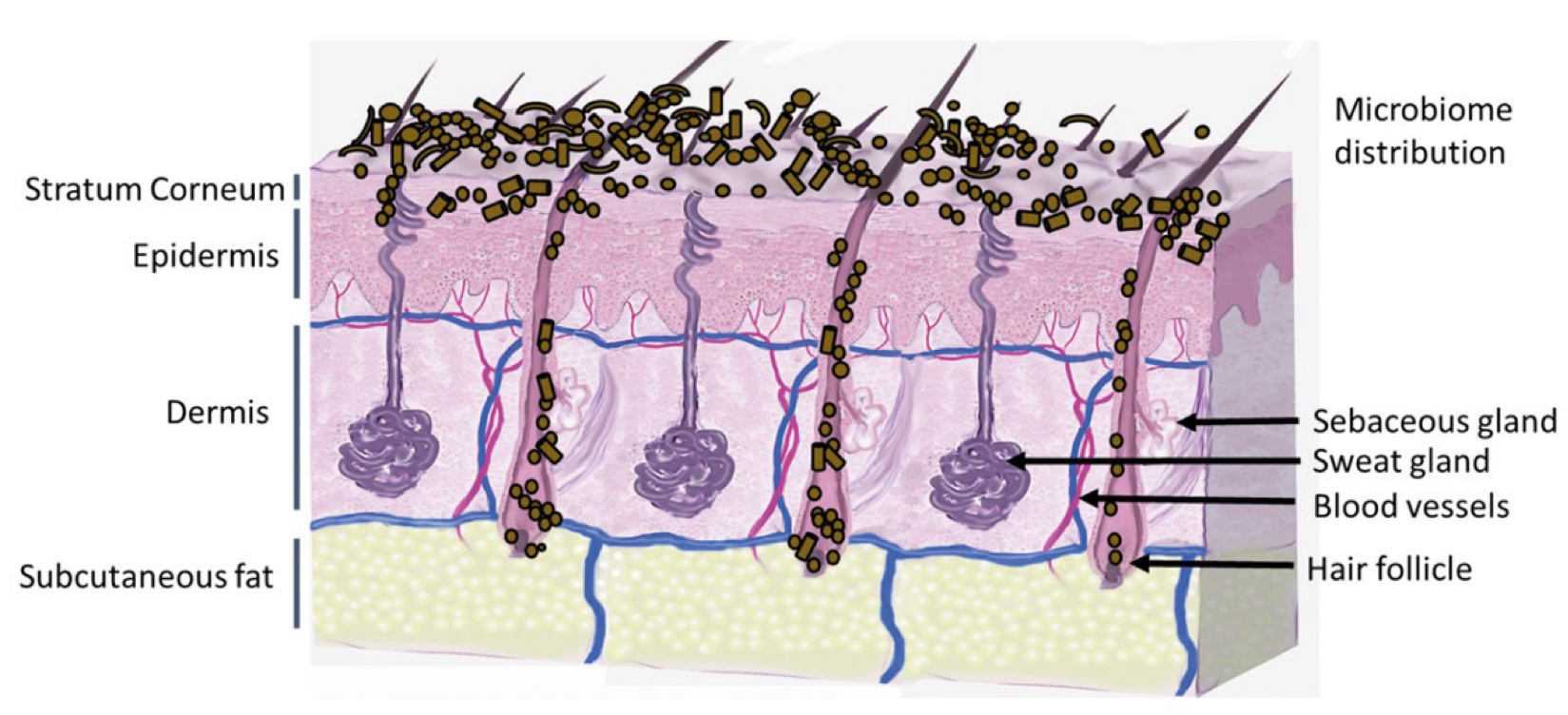Skin care
on
Skin care

peer-reviewed
The popularity of vitamin C Serums for effective skin care
ANTONIA KOSTIC
A Formulator, a Scientific Communication Blog
ABSTRACT: In the era of beauty trends and increased skin-health awareness, consumers actively look for cosmetic products that align with their skin needs. The ongoing innovation in cosmetic formulations has given rise to advanced serums. Vitamin C serums have gained remarkable popularity, especially due to the decline of Vitamin C levels in the skin as part of the ageing process and their strong antioxidant properties (1). It is also important to mention, that maintaining its efficacy relies significantly on the other ingredients in cosmetic formulation and packaging.
Introduction
With the increased accessibility to information, consumers are now better informed about the effectiveness and the correct application of skincare products than ever before. Recognizing that a higher concentration of active ingredients provides enhanced skin benefits, the spotlight has shifted towards serums.
Cosmetic serums have become a staple in global beauty routines, influenced by skincare trends and the desire for efficient, scientifically proven solutions. They are concentrated formulas designed to deliver potent ingredients, such as antioxidants, vitamins, and peptides to the skin. These formulations typically have a lightweight and fast-absorbing texture, allowing the key ingredients to penetrate the skin more effectively. Serums are often used as a part of morning and evening skincare routines, applied after cleansing and before moisturizing.
Another important feature is the ability to target specific skincare requirements. In other words, skin concerns often require particular ingredients to address them. For example, serums can be formulated with retinol for anti-ageing (2), hyaluronic acid for hydration properties (3), niacinamide for maintaining skin balance (4), or vitamin C for brightening effect (5). This enables individuals to purchase a serum that corresponds to their unique skin needs.
Vitamin C or biologically active form- L- ascorbic acid, has long been recognized for its antioxidant and brightening features, as well as its role in supporting collagen synthesis. However, because of the hydrophilic nature and instability, it has been challenging to incorporate it in cosmetic products (5). When it comes to the formulation, cosmetic scientists are bombarded with numerous questions. What form of Vitamin C is the most stable in cosmetic formulation? What about the optimal pH range and packaging? Are there any interactions between other ingredients in the serum?
This article attempts to answer these questions and reviews our updated knowledge of the continuing potential for Vitamin C inclusion in skin care routines.
“
“A study in healthy women providing probiotic yogurt for four weeks showed an improvement in emotional responses as measured by brain scans”
ROLE OF VITAMIN C IN THE SKIN
Before starting any formulation project, it is crucial to comprehend the primary mechanism of the selected ingredients. In the case of Vitamin C, extensive research indicates its high safety profile, making it suitable for prolonged use without any significant adverse effects (6).

Figure 1. Skin Section with Microbiome. Most microorganisms live in the superficial layers of the stratum corneum and in the upper parts of the hair follicles. Some reside in the deeper areas of the hair follicles and are beyond the reach of ordinary disinfection procedures. There bacteria are a reservoir for recolonization after the surface bacteria are removed.
ANTIOXIDANT ROLE
Our skin is exposed to harmful environmental factors, such as solar radiation, pollution and smoking. In this way “oxidative stress” is generated. The reactive oxygen species can cause damage to nucleic acids, proteins and cell membranes. Applying antioxidants topically can offer extra protection, effectively neutralizing reactive oxygen species originating from both external sources and internal metabolic processes. Although some factors experience upregulation, including activation of protein 1 (AP-1) and nuclear factor-β, others like transforming growth factor-β undergo downregulation. Research has demonstrated that Vitamin C inhibits the activation of AP-1, resulting in a decrease in metalloproteinases (MMP) production and preventing collagen damage (5,7).
Regarding ultraviolet (UV)-induced immunosuppression, topical solutions containing Vitamin C have been demonstrated to prevent the decrease in CD1a-expressing Langerhans cells upon exposure to UV radiation (8). Additionally, clinical studies have indicated that solutions containing Vitamin C can effectively diminish UV-induced thymine dimers, thereby potentially lowering the risk of photocarcinogenesis (9).
ANTIOXIDANT ROLE
Our skin is exposed to harmful environmental factors, such as solar radiation, pollution and smoking. In this way “oxidative stress” is generated. The reactive oxygen species can cause damage to nucleic acids, proteins and cell membranes. Applying antioxidants topically can offer extra protection, effectively neutralizing reactive oxygen species originating from both external sources and internal metabolic processes. Although some factors experience upregulation, including activation of protein 1 (AP-1) and nuclear factor-β, others like transforming growth factor-β undergo downregulation. Research has demonstrated that Vitamin C inhibits the activation of AP-1, resulting in a decrease in metalloproteinases (MMP) production and preventing collagen damage (5,7).
Regarding ultraviolet (UV)-induced immunosuppression, topical solutions containing Vitamin C have been demonstrated to prevent the decrease in CD1a-expressing Langerhans cells upon exposure to UV radiation (8). Additionally, clinical studies have indicated that solutions containing Vitamin C can effectively diminish UV-induced thymine dimers, thereby potentially lowering the risk of photocarcinogenesis (9).
ANTIAGING ROLE
Vitamin C functions as a cofactor for prolyl and lysyl hydroxylase, crucial enzymes responsible for cross-linking and stabilizing collagen fibres (5). Also, it directly activates transcription factors related to collagen synthesis and stabilizes procollagen messenger RNA (mRNA) responsible for regulating the synthesis of type I and III collagen (7). Furthermore, Vitamin C enhances the gene expression of collagen and the synthesis of the tissue inhibitor of MMP-1, consequently reducing collagen degradation (7). Through the contribution to collagen biosynthesis and stability, the renewing and anti-inflammatory effects are also achieved (10).
BRIGHTENING ROLE
Melanin is a pigment produced by melanocytes, serving as a shield against the harmful impact of UV radiation from the sun. After its synthesis within melanosomes, it is transferred to keratinocytes. The skin's pigmentation is a direct result of the quantity and distribution of the synthesized melanin (11).
Many skin-lightening ingredients employ an antimelanogenic mechanism, suppressing tyrosinase activity at different levels. Tyrosinase is primarily responsible for converting tyrosine into melanin. Regarding the Vitamin C, it interacts with copper ions at tyrosinase-active sites, suppressing the activity of the enzyme. Consequently, this reaction leads to a reduction in melanin formation and pigmentation (5,11). While vitamin C has demonstrated the ability to suppress melanin production, its clinical effects may not be as potent as topical products containing hydroquinone (12).
FORMULATION CONSIDERATIONS
Scientific findings highlight the effectiveness of a topical aqueous solution containing 15% L-ascorbic acid and 1% Alpha-tocopherol in enhancing protection against erythema and sunburn cell formation compared to using L-ascorbic acid or Alpha-tocopherol alone (13). The synergy between Vitamin C and Vitamin E forms a potent antioxidant combination. Vitamin C plays a key role in regenerating Vitamin E, ensuring a prolonged antioxidative impact. Additionally, incorporating up to 0.05% Beta-carotene further may enhance the antioxidative power of this fusion.
Since a very high concentration of antioxidants might lead to pro-oxidative and irritative reactions, a recommended maximum concentration of L-ascorbic acid is 20% (10). However, due to its hydrophilic and charged characteristics, the effective delivery of L-ascorbic acid through topical application is challenging (7). This water-soluble powder is susceptible to oxidation in hydrous products, resulting in the formation of dehydroascorbic acid. This can be evident through an orange or brown discolouration of the cosmetic product (14). Maintaining a pH lower than 3.5 is crucial to eliminate the ionic charge of L-ascorbic acid and enhance penetration (7). Nevertheless, this acidic pH is unsuitable for lotions and serums. Therefore, the recommendation is to opt for more stable esterified substances like Magnesium Ascorbyl Phosphate, Ascorbyl-6-palmitate, and Tetrahexyldecyl Ascorbate. Not only are these alternatives stable and can be used in accepted pH values but they can also be easily integrated into anhydrous or emulsified serum formulas.
For cosmetic scientists opting for water-based serums, incorporating protective vehicles like liposomes can be beneficial. These unique vesicles act as carriers for a diverse range of both water-soluble and oil-soluble active compounds. Magnesium Ascorbyl Phosphate can be found in liposomes together with other vitamins like Vitamin E, A and D3. In this form it is easily integrated into products containing water, managing pH levels within the range of 4.50 – 5.50 (15).
Currently, various other forms of Vitamin C are available in the market, including 3-O-Ethyl Ascorbic Acid, 3-O-Ethyl Ascorybyl Ether, Ascorbyl Isostearate, Trisodium Ascorbyl Palmitate Phosphate, Ascorbyl Tetraisopalmitate, Ascorbyl Glucoside, Sodium Ascorbyl Phosphate, Bis-Glyceryl Ascorbate, Tetrahexyldecyl Ascorbate, Aminopropyl Ascorbyl Phosphate, Hexyl 3-Glyceryl Ascorbate, Ascorbyl Propyl Hyaluronate, Potassium Ascorbyl Tocopheryl Phosphate, etc (16).
Scientific studies lack the comparison of different forms of Vitamin C, making it unclear which form is the most potent. The concentration of Vitamin C in cosmetic formulations varies depending on the specific derivative of Vitamin C and the accompanying ingredients. Generally, a recommended range falls between more than 8% and less than 20% of Vitamin C to achieve biological significance. Higher concentrations may lead to potential skin irritation (5).
SKIN TYPES AND VITAMIN C SERUMS
The skin naturally absorbs and accumulates Vitamin C from the bloodstream, showing higher concentrations than in plasma. Achieving a healthy Vitamin C level is also possible through topical application. Notably, the epidermal layer contains more of this vitamin than the dermis (7).
When it comes to formulating Vitamin C serums, understanding the skin types is crucial. The reason is that it directly impacts the effectiveness and acceptance of the product by various individuals. Different skin types have unique characteristics and concerns, and tailoring formulations to these specific needs ensures optimal results and customer satisfaction.
When addressing skin concerns, it is crucial to thoughtfully select all the ingredients in the cosmetic formulation. For instance, using non-comedogenic ingredients and creating light-textured serums might be useful for individuals with acne-prone skin (17). The inclusion of ingredients like arbutin or liquorice extract may prove beneficial for individuals with pigmented skin (18).
For people with more sensitive skin, a lower concentration of Vitamin C or stabilized derivatives may be more suitable. Different skin types have varying hydration requirements. Formulating Vitamin C serums with hydrating ingredients can be beneficial for individuals with dry or dehydrated skin (7), while lighter formulations may be preferred for those with oily or combination skin (17). Also, it is worth mentioning that Vitamin C due to its effects in the skin might begenerally beneficial for all age groups (1).
Additionally, we cannot overlook the importance of user experience, their comprehensive skincare routines and environmental factors. Acknowledging the diversity in individual preferences regarding product textures, scents, and finish feeling directs the formulation of Vitamin C serums. It should meet the user’s expectations, ultimately enhancing overall satisfaction. The creation of serums that seamlessly integrate into comprehensive skincare routines, complementing other products without causing incompatibility is important. Furthermore, understanding the environmental conditions, such as humidity or dry climates, assists in formulating Vitamin C serums that remain stable and effective in diverse settings.
PACKAGING CHALLENGES
As noted earlier, Vitamin C is unstable when exposed to light and high temperatures, leading to a loss of its antioxidant properties and a change in the colour of the products (14). Therefore, it is recommended to use opaque and airtight containers to ensure the ingredients remain unchanged. When opting for a serum dropper, it is advisable to choose more stable Vitamin C derivative and dark bottles.
The efficacy of Vitamin C is pH-dependent, emphasizing the importance of maintaining the appropriate pH level, which requires careful selection of packaging materials to prevent pH changes due to interactions between the serum and the container. Glass and opaque plastics are commonly preferred.
In the context of sustainability, the challenge lies in finding packaging solutions that are both protective and environmentally friendly. This entails exploring options such as recyclable materials and minimizing packaging waste.
TESTING CONSIDERATIONS
Conducting both in vitro and in vivo studies is crucial to substantiate cosmetic claims for Vitamin C serums and compatibility with the packaging. The choice of studies depends on the specific purpose of the products.
Preclinical tests for Vitamin C in cosmetic serums play a key role in evaluating the formulation's stability, efficacy and safety. These tests encompass a range of assessments, including stability testing, pH measurement, antioxidant capacity assays (such as DPPH and FRAP), penetration studies, collagen synthesis studies, cytotoxicity studies (like MTT), and more. In vitro evaluations offer valuable insights into the performance of Vitamin C in cosmetic serums, allowing manufacturers to optimize formulations and ensure the delivery of effective and stable products to consumers. It is essential to emphasize that these tests are often complemented by in vivo studies, further validating the serum's performance and safety on human skin.
CLOSING REMARKS AND FUTURE PERSPECTIVES
Due to higher concentration of active compound and suitability for different skin types, Vitamin C serums have become the preferred choice in the skincare routine. Advanced derivatives of Vitamin C contribute to product stability, extended shelf life, better skin’s penetration and maintenance of the skin’s acceptable pH values. Also, encapsulation into a lipospheric form may result in increased uptake (7).
It is essential to acknowledge that the penetration and ingredient's beneficial properties in the skin also depend on the overall formulation composition. Yet, the uncertainty persists in identifying the most potent derivative and the optimal complementary ingredients in the mixture, owing to a lack of scientific research in this area. Addressing this matter is crucial and should be a prioritized in the near future. Still, conducting both in vitro and in vivo studies for each final cosmetic product is advisable to confirm penetration, effectiveness and to support cosmetic claims.
In the end, Vitamin C serums easily blend into established skincare routines. They adeptly tackle specific skincare concerns, proving to be well-tolerated and enjoyable for a diverse range of users. The cosmetic industry in this sector boasts a robust foundation in scientific marketing, presenting a lucrative opportunity for every brand involved.

Figure 2. Skin Section with Microbiome. Most microorganisms live in the superficial layers of the stratum corneum and in the upper parts of the hair follicles. Some reside in the deeper areas of the hair follicles and are beyond the reach of ordinary disinfection procedures. There bacteria are a reservoir for recolonization after the surface bacteria are removed.
Conclusion
Studies of major depressive disorder have been correlated with reduced Lactobacillus and Bifidobacteria and symptom severity has been correlated to changes in Firmicutes, Actinobacteria, and Bacteriodes. Gut microbiota that contain more butyrate producers have been correlated with improved quality of life (1).
A study in healthy women providing probiotic yogurt for four weeks showed an improvement in emotional responses as measured by brain scans (2). A subsequent study by Mohammadi et al. (3) investigated the impacts of probiotic yogurt and probiotic capsules over 6 weeks and found a significant improvement in depression-anxiety-stress scores in subjects taking the specific strains of probiotics contained in the yogurt or capsules. Other studies with probiotics have indicated improvements in depression scores, anxiety, postpartum depression and mood rating in an elderly population (4-7).
Other studies have indicated a benefit of probiotic supplementation in alleviating symptoms of stress. In particular, researchers have looked at stress in students as they prepared for exams, while also evaluating other health indicators such as flu and cold symptoms (1). In healthy people, there is an indication that probiotic supplementation may help to maintain memory function under conditions of acute stress.
References and notes
- Pullar JM., et al. The Roles of Vitamin C in Skin Health. Nutrients. 2017. 9(8):866.
- Zasada M, Budzisz E. Retinoids: active molecules influencing skin structure formation in cosmetic and dermatological treatments. pdia. 2019;36(4):392–7.
- Bukhari SNA, Roswandi NL, Waqas M, Habib H, Hussain F, Khan S, et al. Hyaluronic acid, a promising skin rejuvenating biomedicine: A review of recent updates and pre-clinical and clinical investigations on cosmetic and nutricosmetic effects. International Journal of Biological Macromolecules. 2018 Dec;120:1682–95.
- Boo YC. Mechanistic Basis and Clinical Evidence for the Applications of Nicotinamide (Niacinamide) to Control Skin Aging and Pigmentation. Antioxidants. 2021 Aug 21;10(8):1315.
- Al‐Niaimi F, Chiang N. Topical Vitamin C and the skin: mechanisms of action and clinical applications. 2017 Jul 1;10(7):14–7.
- Telang P. S. Vitamin C in dermatology. Indian dermatology online journal. 2013. 4(2), 143–146.
- Chen L, hu JY, Wang sQ. The role of antioxidants in photoprotection: a critical review. J Am Acad Dermatol. 2012;67(5):1013–1024.
- Matsui Ms, Hsia A, Miller JD, et al. Non-sunscreen photoprotection: antioxidants add value to a sunscreen. J Investig Dermatol Symp Proc. 2009;14(1):56–59.
- Murray JC, Burch Ja, Streilein RD, Iannacchione MA, Hall RP, Pinnell SR. A topical antioxidant solution containing vitamins C and e stabilized by ferulic acid provides protection for human skin against damage caused by ultraviolet irradiation. J Am Acad Dermatol. 2008;59(3):418–425.
- Rattanawiwatpong P, Wanitphakdeedecha R, Bumrungpert A, Maiprasert M. Anti‐aging and brightening effects of a topical treatment containing vitamin C, vitamin E, and raspberry leaf cell culture extract: A split‐face, randomized controlled trial. Journal of Cosmetic Dermatology. 2020 Jan 24;19(3):671–6.
- Sanadi RM, Deshmukh R. The effect of Vitamin C on melanin pigmentation – A systematic review. Journal of Oral and Maxillofacial Pathology. 2020 Jan 1;24(2):374.
- Espinal-Perez Le, Moncada B, Castanedo-Cazares JP. A double- blind randomized trial of 5% ascorbic acid vs. 4% hydroquinone in melasma. Int J Dermatol. 2004;43(8):604–607.7
- Lin J, Selim M, Shea C, et al. UV photoprotection by combination topical antioxidants vitamin C and vitamin E. J Am Acad Dermatol. 003;48(6):866-874.
- dsm-firmenich Personal Care (Quali® C; Ascorbic Acid) Datasheet [Internet]. UL Prospector. [cited 18 Dec 2023] Available from: https://www.ulprospector.com/documents/1633186.pdf?bs=472&b=6061416&st=1&sl=291246670&crit=a2V5d29yZDpbYXNjb3JiaWMgYWNpZF0gPiBkc20tZmlybWVuaWNoIFBlcnNvbmFsIENhcmU%3d&k=ascorbic|acid&r=eu&ind=personalcare
- NanoVec (LIP-91: Multivitamin Liposomes) Datasheet [Internet]. UL Prospector. [cited 18 Dec 2023] Available from: https://www.ulprospector.com/documents/1587793.pdf?bs=103378&b=1016662&st=1&sl=291247949&crit=a2V5d29yZDpbTElQLTkxXQ%3d%3d&k=LIP-91&r=eu&ind=personalcare
- Find Ingredients - vitamin c for Personal Care & Cosmetics applications, search data sheets, SDS and request samples | Prospector [Internet]. Available from: https://www.ulprospector.com/en/eu/PersonalCare/Product/search?k=vitamin+c&st=1&so=k_0&sl=290767149
- Conforti C, Giuffrida R, Fadda S, Fai A, Romita P, Zalaudek I, et al. Topical dermocosmetics and acne vulgaris. Dermatologic Therapy. 2020 Nov 15;34(1).
- Searle T, Al‐Niaimi F, Ali F. The top 10 cosmeceuticals for facial hyperpigmentation. Dermatologic Therapy. 2020 Sep 4;33(6).
